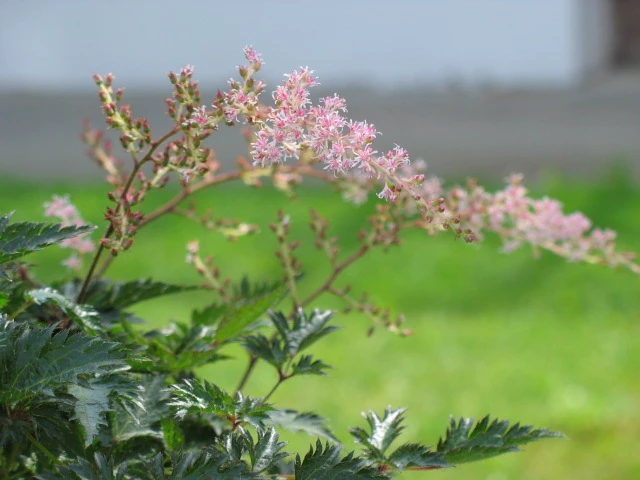Entire-Leaved Astilbe
(Astilbe simplicifolia)
Entire-Leaved Astilbe (Astilbe simplicifolia)
/
/

Staudengärtnerei Forssman
CC BY-SA 2.0
Image By:
Staudengärtnerei Forssman
Recorded By:
Copyright:
CC BY-SA 2.0
Copyright Notice:
Photo by: Staudengärtnerei Forssman | License Type: CC BY-SA 2.0 | License URL: https://creativecommons.org/licenses/by-sa/2.0/ | Uploader: staudengärtnereiforssman | Publisher: Flickr |






Estimated Native Range
Climate Requirements
| • Precipitation | 63" - 76" |
| • High Temp. | 76°F - 83°F |
| • Low Temp. | 22°F - 29°F |
Summary
Astilbe simplicifolia, commonly known as entire-leaved astilbe, is a perennial herb native to the mountainous regions and woodland edges of Japan and North Korea. It typically grows to a height of 12-18 inches (30-45 cm) and a similar width, featuring glossy, deep green foliage and plume-like flower spikes. The flowers range in color from white to pink and bloom in mid to late summer, providing a showy display that attracts pollinators.
Entire-leaved astilbe is valued for its low maintenance, resistance to deer, and ability to thrive in shady garden spots where other plants might struggle. It is often used in border plantings, woodland gardens, and as a ground cover under taller shrubs or trees. This astilbe prefers consistently moist, humus-rich soil and benefits from mulching to retain soil moisture. While it can tolerate drier conditions once established, it will not flower as profusely. The cultivars ’Atrorosea’, ’Bronce Elegans’, and ’Sprite’ are particularly notable for their garden performance and have received the Royal Horticultural Society’s Award of Garden Merit. Potential problems include powdery mildew and leaf spot, especially in hot, dry conditions.CC BY-SA 4.0
Entire-leaved astilbe is valued for its low maintenance, resistance to deer, and ability to thrive in shady garden spots where other plants might struggle. It is often used in border plantings, woodland gardens, and as a ground cover under taller shrubs or trees. This astilbe prefers consistently moist, humus-rich soil and benefits from mulching to retain soil moisture. While it can tolerate drier conditions once established, it will not flower as profusely. The cultivars ’Atrorosea’, ’Bronce Elegans’, and ’Sprite’ are particularly notable for their garden performance and have received the Royal Horticultural Society’s Award of Garden Merit. Potential problems include powdery mildew and leaf spot, especially in hot, dry conditions.CC BY-SA 4.0
Plant Description
- Plant Type: Herb
- Height: 1-1.5 feet
- Width: 1-1.5 feet
- Growth Rate: Moderate
- Flower Color: Pink, White
- Flowering Season: Spring, Summer
- Leaf Retention: Deciduous
Growth Requirements
- Sun: Part Shade, Full Shade
- Water: Medium
- Drainage: Medium
Common Uses
Bee Garden, Bird Garden, Border Plant, Butterfly Garden, Deer Resistant, Groundcover, Hummingbird Garden, Low Maintenance, Rabbit Resistant, Rock Garden, Showy Flowers
Natural Habitat
Mountainous regions and woodland edges of Japan and North Korea
Other Names
Common Names: White Sensation Atilbe , False Goat’s Beard , Kleine Astilbe , Astilbe Glabre , 외잎승마
Scientific Names: Astilbe simplicifolia
GBIF Accepted Name: Astilbe simplicifolia Makino